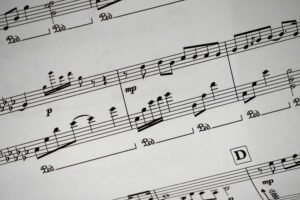Three Assassins, also known as Grasshopper, is a thriller novel by Kōtarō Isaka and was originally published in 2004. The story revolves around Suzuki, a maths teacher who aims to avenge his dead wife by infiltrating the underworld. As he ventures into Fräulein, a criminal organisation, in hopes of working his way up, an important member of the company is assassinated by a man known as the Pusher that Suzuki is ordered to go after. The theme of ‘city life’ is easily identifiable in dialogues, especially those between Suzuki and the Pusher. This article aims to explore the ways in which the city life in Three Assassins is described.
1: Insects
Most of the concepts are communicated through the use of insects and contribute greatly to the allegories throughout the story. The reader is introduced to the thesis with the sentence “in some ways, humans are less like mammals and closer to insects” in the first chapter when Suzuki recounts something his professor once told him, establishing that humans are one of the few animals that “live on top of each other in such great numbers”.
Interestingly, some animals choose to live in groups as it provides them with more advantages for both defence and finding resources. As said by Suzuki’s professor, many insects have social behaviours and humans do too. Humans realised early on that they worked more efficiently as a team and it is speculated that cities emerged during the Neolithic Period where more densely populated areas were introduced. The comparisons to erratically moving and closely bunched insects captures the chaotic city life in the book.
2: The Pusher’s philosophy
The Pusher is a strong advocate for this belief and discusses it with Suzuki after inviting him to a family dinner. There, he states that “any animal that lives in a high-density situation will change its behaviour. They turn dark, they rush, they get aggressive. Before they know it, they’ve become swarming locusts (…) Totally different from the green, solitary grasshopper.” His theory focuses more on the swarming of certain grasshoppers when a space overcrowds. Unlike locusts, which are grasshoppers shifted from the solitary to the adult stage with the ability to fly away, humans remain stuck in the city, growing more aggressive.
Cities are always said to be overwhelming and in them, people live a fast-paced life. Studies show that humans tend to become increasingly hostile and stressed in crowded areas for many reasons, such as limited resources and occasionally excessive interactions, therefore decreasing one’s responsibility for the other members of society (Weiss, 1994).
3: The “Locusts”
On the other hand, there is a recurring theme of “living like you’re dead”. The nihilism in the Whale, another assassin, communicates the reality for those who live with like attitudes. Lines including “we’re not living here, we’re just surviving” and “people simply live, with no goal, no destination” bring to light the hopelessness of those who have both lost compassion and forgotten their identities. When paying attention to the plot of the book and taking the time to consider what makes someone a “locust”, one will discover that all the other members of their criminal underworld can be described as such. They are a more extreme example of The Pusher’s philosophy; aggressiveness cultivated by city life.
Conclusion
Three Assassins provides an intriguing albeit slightly disturbing take on urban existence. The author fabricates a fictional world that is not too far from reality – one where humans pile up in dense cities, one where they swarm like locusts to become aggressive and one where they start to lose their sense of self.
Bibliography
Terminix. (2020). The Difference Between Locusts and Grasshoppers. Terminix. https://www.terminix.com/blog/education/locust-vs-grasshopper/
University of Cambridge. (2009, January 30). A brain chemical changes locusts from harmless grasshoppers to swarming pests. University of Cambridge. https://www.cam.ac.uk/research/news/a-brain-chemical-changes-locusts-from-harmless-grasshoppers-to-swarming-pests
Weiss, R. (1994, July 12). DOES CROWDING CAUSE AGGRESSIVE BEHAVIOR? Washington Post; The Washington Post. https://www.washingtonpost.com/archive/lifestyle/wellness/1994/07/12/does-crowding-cause-aggressive-behavior/2fec87ed-e5df-4a4d-a640-544266fe72f8/








Be First to Comment